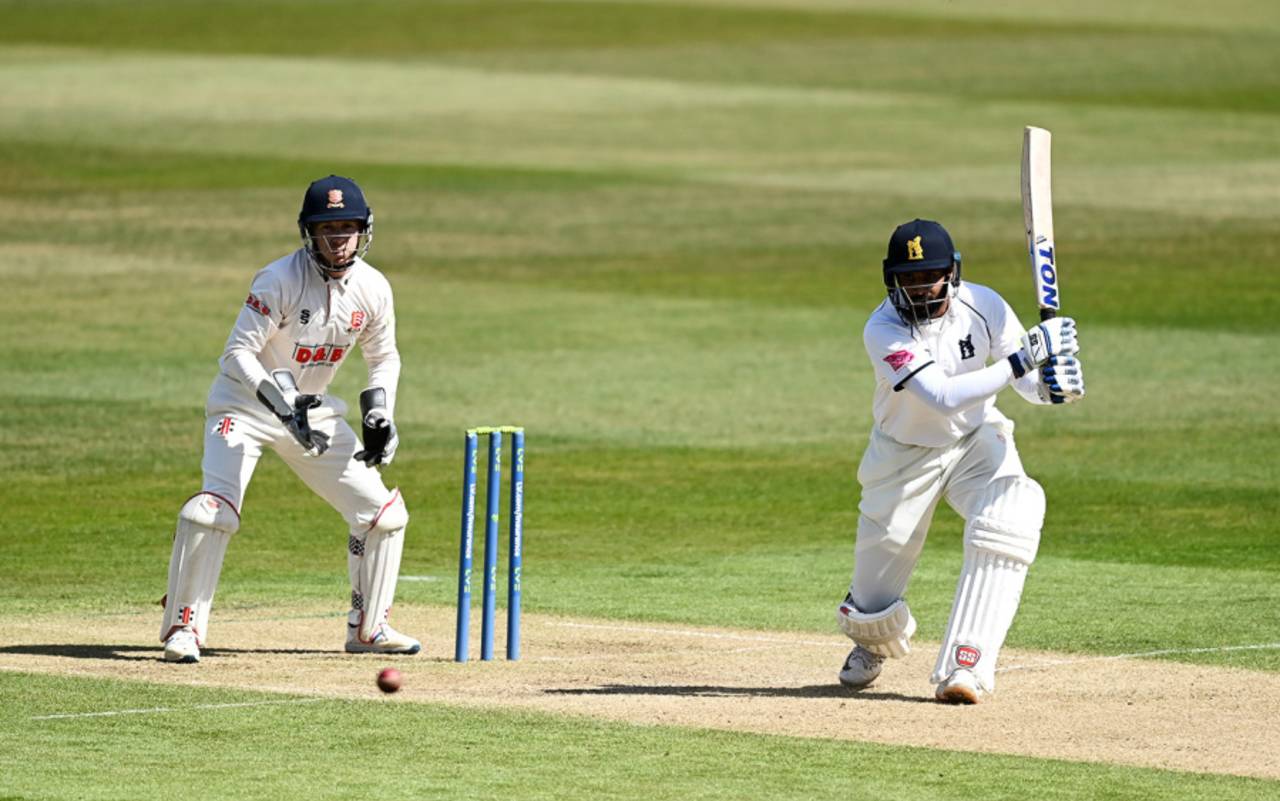Hanuma Vihari: 'In England you have to be really certain with your shot selection'
The India batter talks about facing Stuart Broad in county cricket, and his work helping with pandemic relief in India

"The Dukes does something all day - off the wicket or in the air. There's always something for the bowlers and that is the key challenge" • Gareth Copley/Getty Images
After the county stint I had a break. The situation in India was not great, so I thought if I could help out, I could have an influence on some other people's lives. It started by me using my contacts on social media. And fortunately, now there is a group of volunteers who have formed a WhatsApp group and they share the workload and reach out to as many people as possible.
Yes. I used to tell her that I have an interest in social service. One day while watching the news from India, she said why not start now? The next day I started on Instagram and then moved to Twitter.
The group solves most problems themselves, but in case of an emergency, say, they are unable to find a ventilator bed or medicines for someone, they ask me to post it on my social media to spread the word. At times, I speak to families of patients as well as doctors and coordinate. That is my role in the group.
Good news.. we managed to move mamatha garu to Hyderabad few days back and she delivered a baby boy this morning. They're in observation.
— Hanuma vihari (@Hanumavihari) May 28, 2021
Thank you to everyone who supported their family. Saved two lives. https://t.co/dnhMRHTWdd
It does move you. What they are going through, listening to their stories, it is definitely emotional. But we try to help as much as we can. In case something unfortunate happens, you try to help them emotionally, and we try to help as many as we can.
It is not about getting out here. It is about life [at stake]. I have decided to help, so I need to deal with the situation. Not only me, I have to handle others in the group as well. They also feel emotional while trying to help a patient and when they get some bad news, they feel bad. They get more attached than me as they are in touch with the families of the patient and they know them more closely. But so far we have helped several people in Andhra and Telangana. We have done well. We have had some bad news as well, but it is part of the journey - we have to accept it.
The Kookaburra gets soft in Australia after a while. But the Dukes does something all day - off the wicket or in the air. There's always something for the bowlers and that is the key challenge. When I came to England in April, it was quite cold. Even if you believe you are set, you can still be surprised by the movement. Like when I got out in my 30s against Essex, where I thought the wicket was quite good to bat on, but the odd ball was doing something because of the hard seam on the Dukes.

At that point my trigger movements were different compared to now. I was young and playing my first game. I was moving more than I would have liked to at that point. My trigger movements were so far across that what he said helped me deal with the straight delivery better. Those cues helped and I ended up scoring runs and batting comfortably. But now I feel I am setting up to face the outswinger and inswinger decently. Now my game is much more in control. I know what my trigger movements are.
Yes, it depends on where we are playing. In Australia it was more towards leg stump because there is no lateral movement there, so you can play beside the line of the ball. Here, in England, you have to get more in line and judge the off stump more because of the movement of the ball. I start on the middle stump and because I do the trigger [back and across], I end up between off and middle. At the same time, you have to remember that if it is a stump-line ball, you have to play straight.
Definitely, that's the challenge here. The overhead conditions play a part as well because when it is sunny, it gets a bit easier to bat, but when it is overcast, the ball moves all day. That was the challenge I faced early on in this season of county cricket - because it was quite cold and the ball was doing a lot off the wicket.

It [my innings] was towards the end of the day's play. We needed to bat about nine overs. My thought process was to bat out those overs and come back fresh the next morning. And I was almost there: there were about 1.1 overs remaining in the day when I got out. He [Broad] was bowling well. He was fresh, he had not played a game until then. The floodlights were on and he was steaming in. I was not really overthinking. I was just trying to compete with him. He bowled a good delivery and I did not play as well as I could have.
I thought it was full enough for me to drive, but again, in England you have to be really certain with your shot selection. In India, you can get away with a push, or even if it is not there to drive, you can still get away driving on the up. If I were to play that ball a second time, I would try to play as late possible.
Nagraj Gollapudi is news editor at ESPNcricinfo